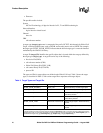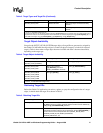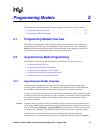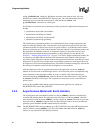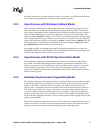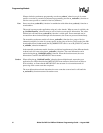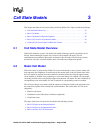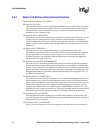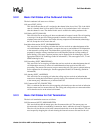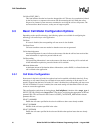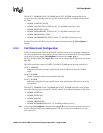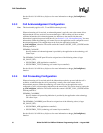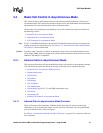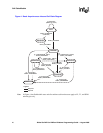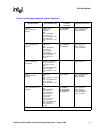
34 Global Call API for HMP on Windows Programming Guide — August 2006
Call State Models
3.2.1 Basic Call States at the Inbound Interface
The basic inbound call states are as follows:
Null state (GCST_NULL)
This state indicates that no call is assigned to the channel (time slot or line). This is the initial
state of a channel when it is first opened. This state is also reached when a call is released or
after the channel is reset. A channel in this state is available for inbound calls after being
initialized to receive incoming calls.
Call Detected (GCST_DETECTED)
An incoming call has been received but not yet offered to the application. In this state, the call
is being processed, which typically involves waiting for more information or allocating a
resource. Although the call is not yet offered to the application, this state is for informational
purposes to reduce glare conditions since the application is aware of the presence of a call on
the channel.
Call Offered (GCST_OFFERED)
This state exists for an incoming call when the user application has received a call
establishment request but has not yet responded. The newly arrived inbound call is offered to
the user application to be accepted, answered, rejected, etc. Call information is typically
available at this time to be examined so that the application can determine the appropriate
action to take with regards to the call.
Get More Information (GCST_GETMOREINFO)
This state exists for an incoming call when the network has received an acknowledgement of
the call establishment request, which permits the network to send additional call information
(if any) in the overlap mode. The application is waiting for more information, typically called
party number digits. (This state is optional and may not be supported in all technologies. See
the appropriate Global Call Technology Guide for information.) This state applies to E1, T1
and ISDN technologies only.
Call Routing (GCST_CALLROUTING)
This state exists for an incoming call when the user has sent an acknowledgement that all call
information necessary to effect call establishment has been received. The acknowledgement
can be sent from the Offered or the GetMoreInfo state if all the information has been received.
This transition typically involves the sending of Call Routing tones or technology specific
messages; for example, in the case of ISDN, a CALL_PROCEEDING message is sent. The
application can now accept or answer the call. (This state is optional and may not be supported
in all technologies. See the appropriate Global Call Technology Guide for information.)
Call Accepted (GCST_ACCEPTED)
This state indicates that the incoming call was offered and accepted by the application. The
user on the inbound side has indicated to the calling party that the destination user is alerting or
ringing but has not yet answered.
Call Connected (GCST_CONNECTED)
This is a common state that exists for an incoming call when the user has answered the call.



